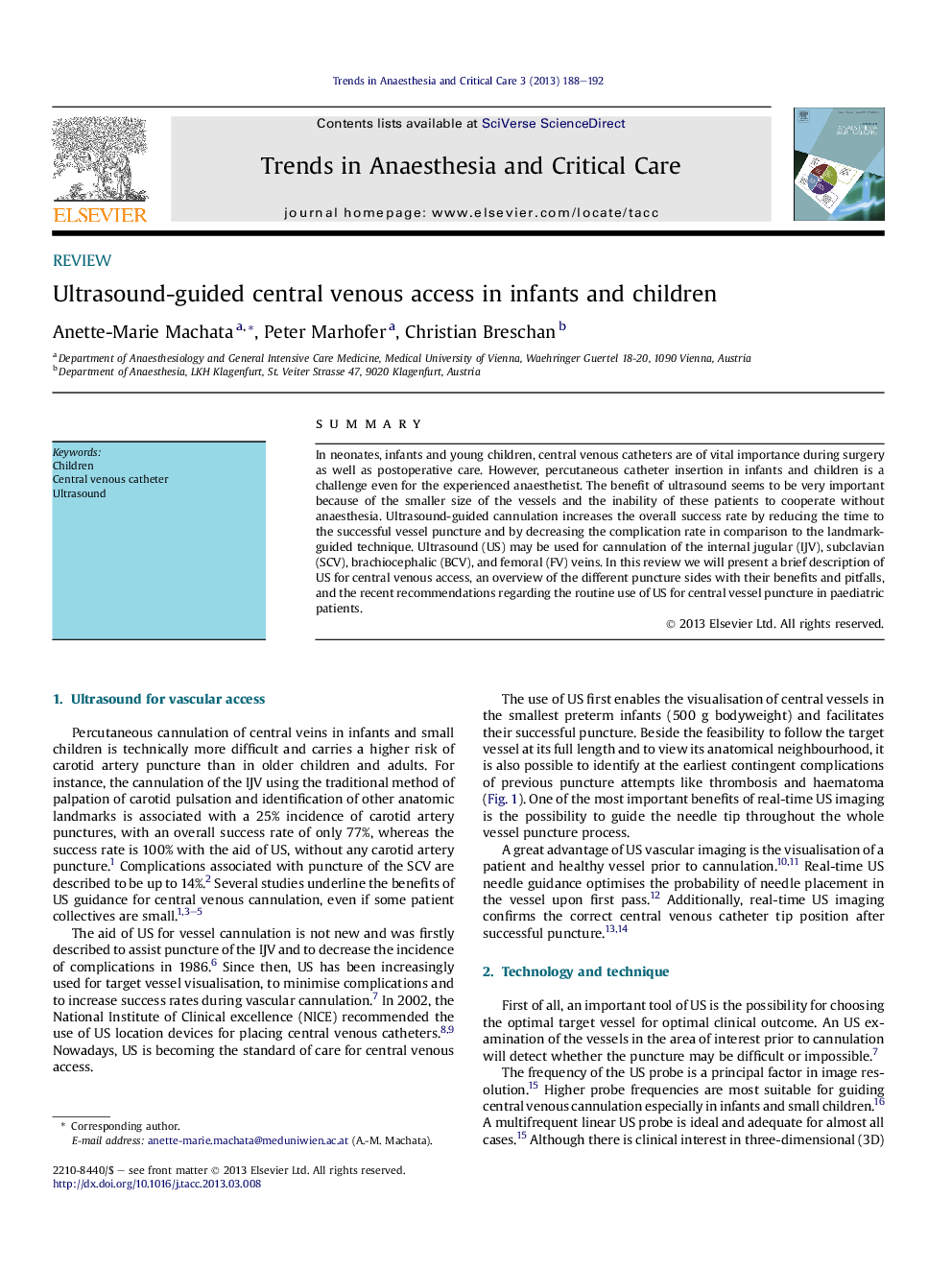| Article ID | Journal | Published Year | Pages | File Type |
|---|---|---|---|---|
| 2772621 | Trends in Anaesthesia and Critical Care | 2013 | 5 Pages |
SummaryIn neonates, infants and young children, central venous catheters are of vital importance during surgery as well as postoperative care. However, percutaneous catheter insertion in infants and children is a challenge even for the experienced anaesthetist. The benefit of ultrasound seems to be very important because of the smaller size of the vessels and the inability of these patients to cooperate without anaesthesia. Ultrasound-guided cannulation increases the overall success rate by reducing the time to the successful vessel puncture and by decreasing the complication rate in comparison to the landmark-guided technique. Ultrasound (US) may be used for cannulation of the internal jugular (IJV), subclavian (SCV), brachiocephalic (BCV), and femoral (FV) veins. In this review we will present a brief description of US for central venous access, an overview of the different puncture sides with their benefits and pitfalls, and the recent recommendations regarding the routine use of US for central vessel puncture in paediatric patients.
